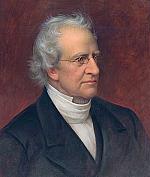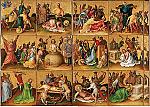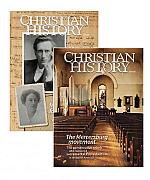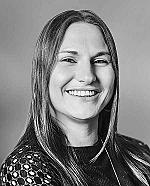Recommended resources: Mercersburg movement

Books
General overviews of the Mercersburg movement, theology, liturgy, and legacy can be found in James Hastings Nichols, Romanticism in American Theology: Nevin and Schaff at Mercersburg (1961); and William B. Evans, A Companion to the Mercersburg Theology: Evangelical Catholicism in the Mid-Nineteenth Century (2019).
Learn more about the philosophical and theological movements that influenced Mercersburg thinkers with Howard J. B. Ziegler, Frederick Augustus Rauch: American Hegelian (1953); William DiPuccio, The Interior Sense of Scripture: The Sacred Hermeneutics of John W. Nevin (1998); Martin Redeker, Schleiermacher: Life and Thought (1973); B. A. Gerrish, A Prince of the Church: Schleiermacher and the Beginnings of Modern Theology (2001); Linden DeBie, Speculative Theology and Common-Sense Religion (2008); and Karl Ameriks, ed., The Cambridge Companion to German Idealism (2017).
Mercersburg’s idealist philosophical approach was framed against Scottish common sense realism, which is explained in S. A. Grave, The Scottish Philosophy of Common Sense (1960). See also Theodore Dwight Bozeman, Protestants in an Age of Science: The Baconian Ideal and Ante-bellum American Religious Thought (1977); and Jennifer Woodruff Tait, The Poisoned Chalice: Eucharistic Grape Juice and Common-Sense Realism in Victorian Methodism (2011).
Read about John Williamson Nevin in Theodore Appel, The Life and Work of John Williamson Nevin (1889); Sam Hamstra Jr. and Arie Griffioen, eds., Reformed Confessionalism in Nineteenth-Century America: Essays on the Thought of John Williamson Nevin (1996); Richard Wentz, John Williamson Nevin: American Theologian (1997); Darryl Hart, John Williamson Nevin: High Church Calvinist (2005); and Linden DeBie, John Williamson Nevin (2023).
Discover more on Philip Schaff in David Schaff, The Life of Philip Schaff (1897); George Shriver, Philip Schaff: Christian Scholar and Ecumenical Prophet (1988); and Stephen R. Graham, Cosmos in the Chaos: Philip Schaff’s Interpretation of Nineteenth-Century American Religion (1995).
While you can read a wealth of Nevin’s and Schaff’s writings published by Wipf and Stock, a few anthologies and select works include James Hastings Nichols, ed., The Mercersburg Theology (1966); Charles Yrigoyen Jr. and George Bricker, eds., Catholic and Reformed: Selected Theological Writings of John Williamson Nevin (1978) and Reformed and Catholic: Selected Historical and Theological Writings of Philip Schaff (1979); Augustine Thompson, ed., The Anxious Bench, Antichrist and the Sermon Catholic Unity (2000); Sam Hamstra Jr., ed., The Reformed Pastor: Lectures on Pastoral Theology by John Williamson Nevin (2006); Philip Schaff, History of the Christian Church (2006); Linden DeBie and W. Bradford Littlejohn, eds., The Mystical Presence (2012); David Bains and Theodore Louis Trost, eds., The Development of the Church: “The Principle of Protestantism and Other Historical Writings of Philip Schaff (2017); and Lee Barrett, ed., The Heidelberg Catechism: The Mercersburg Understanding of the German Reformed Tradition (2021).
The Puritans and the First Great Awakening play an important part in Mercersburg’s story. Read Edmund Morgan, Visible Saints: The History of a Puritan Idea (1963); Patricia Caldwell, The Puritan Conversion Narrative: The Beginnings of American Expression (1983); and Harry Stout, The Divine Dramatist: George Whitefield and the Rise of Modern Evangelicalism (1991) to learn more.
For more on revivalism and New Measures, read Whitney R. Cross, The Burned-Over District: The Social and Intellectual History of Enthusiastic Religion in Western New York, 1800–1850 (1950); Robert Caldwell, Theologies of the American Revivalists (2017); Ted Smith, The New Measures (2007); Leigh Eric Schmidt, Holy Fairs: Scotland and the Making of American Revivalism (2001); and Charles Hambrick-Stowe, Charles G. Finney and the Spirit of American Evangelicalism (1996).
You can also get a general overview of eighteenth- and nineteenth-century religion in America from Nathan Hatch, The Democratization of American Christianity (1989) and Mark Noll, America’s God (2002).
Discover more about Emanuel Gerhart in Annette Aubert, The German Roots of Nineteenth-Century American Theology (2013). You can also read his key writings in Annette Aubert, ed., Christocentric Reformed Theology in Nineteenth-Century America (2021).
As for the movement’s critics, read about Charles Hodge in William B. Evans, Imputation and Impartation: Union with Christ in American Reformed Theology (2008); W. Bradford Littlejohn, The Mercersburg Theology and the Quest for Reformed Catholicity (2009); Paul Gutjahr, Charles Hodge: Guardian of American Orthodoxy (2011); W. Andrew Hoffecker, Charles Hodge: The Pride of Princeton (2011); Linden DeBie and W. Bradford Littlejohn, eds., Coena Mystica: Debating Reformed Eucharistic Theology (2013); and Owen Anderson, Reason and Faith in the Theology of Charles Hodge (2014).
Later Mercersburg-related conflict within the German Reformed Church in America tended to focus on liturgical matters. For more on the liturgical controversy, see Jack Martin Maxwell, Worship and Reformed Theology: The Liturgical Lessons of Mercersburg (1976).
PAST CH ISSUES
Check out these past issues of Christian History for more content related to this issue—all are available online; some are available for purchase as hard copies.
45: Camp Meetings
82: Phoebe Palmer and the Holiness Movement
129: Modern Amnesia
138: America’s Book: Bible and the Nation
143: America’s Book: Bible and the Church
151: Awakenings
VIDEOS FROM VISION VIDEO
Two separate video series, History of Christianity and History of Christian Worship, include topics important to Schaff and Nevin. Both also include downloadable study guides. You can also look at the Mercersburg movement’s revival context in Great Awakening: Spiritual Revival in Colonial America, Penn’s Seed, and People of Faith: Christianity in America. For Reformation and sacramental context, check out Calvin, Zwingli, and Brother Klaus. Some of these titles are only available via digital download; you may access more content by streaming on Redeem TV.
WEBSITES
Websites dedicated to continuing and archiving the Mercersburg movement include The Mercersburg Society and Mercersburg Historical Society. You may also learn more about the German Reformed Church with this short course developed by the United Church of Christ. Easily access the entire Mercersburg Liturgy online, and find writings on Mercersburg theology at Mercersburg Today. The digital archive at Lancaster Theological Seminary is another helpful collection.
Public-domain primary source documents mentioned in this issue can be found in the usual collections, including the Christian Classics Ethereal Library, Gutenberg.org, and Internet Modern Sourcebook. Finally, learn more at American Society of Church History, which Philip Schaff founded and where he served as its first president. CH
By the authors and editors
[Christian History originally published this article in Christian History Issue #155 in 2025]
Next articles
Questions for reflection: Mercersburg movement
Questions to help you reflect on the legacy of the Mercersburg movement
the editorsDid you know? What Happened to the Apostles?
Though often creatively hyperbolic and of dubious origins, apostolic legends have inspired believers through the ages
the editorsLetters: What Happened to the Apostles?
Readers respond to Christian History
our readers and the editorsEditor's Note: What Happened to the Apostles?
God reveals himself to us in a true story
Kaylena RadcliffSupport us
Christian History Institute (CHI) is a non-profit Pennsylvania corporation founded in 1982. Your donations support the continuation of this ministry
Donate







